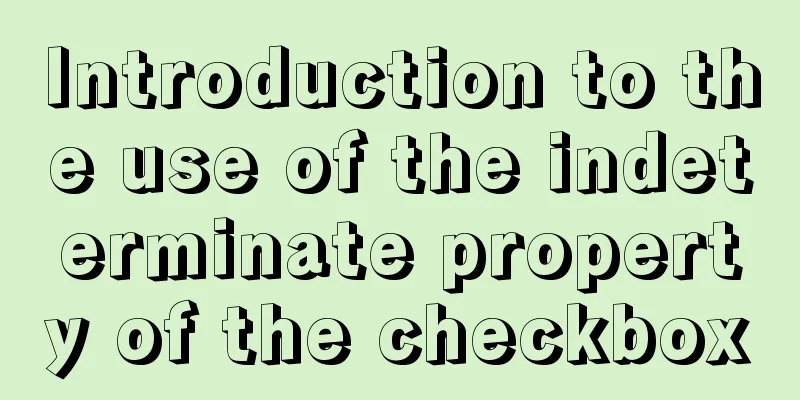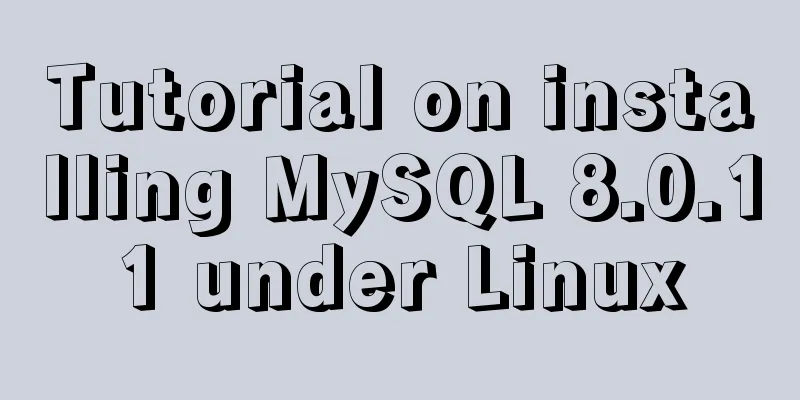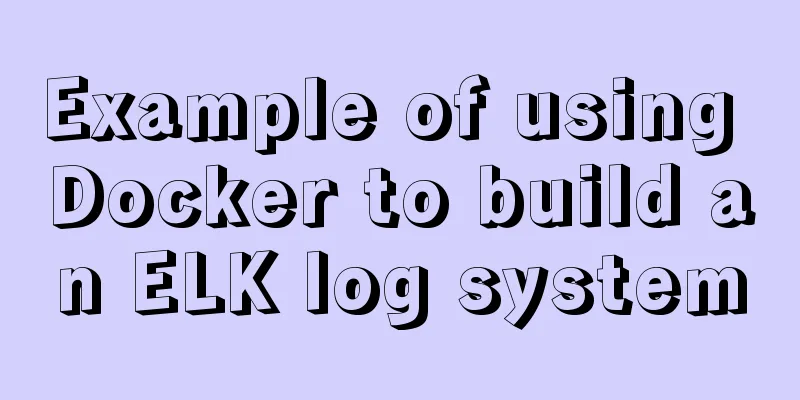How to set up Spring Boot using Docker layered packaging

|
The Spring Boot project uses docker containers, jar and war layered packaging. Spring Boot now supports layered packaging technology. Let's use it to speed up Docker packaging and build very quickly. Layer settingsFirst, similar settings should be made in pom:
<plugin>
<groupId>org.springframework.boot</groupId>
<artifactId>spring-boot-maven-plugin</artifactId>
<version>${spring-boot.version}</version>
<configuration>
<!-- Enable layered packaging support -->
<layers>
<enabled>true</enabled>
</layers>
</configuration>
<executions>
<execution>
<goals>
<goal>repackage</goal>
</goals>
</execution>
</executions>
</plugin>
Declare the After packaging, we check the jar package or war package and find an additional layers.idx file, which contains a list of layered files. - "dependencies": - "WEB-INF/lib-provided/" - "WEB-INF/lib/HikariCP-4.0.3.jar" - "WEB-INF/lib/aspectjweaver-1.9.5.jar" ... ... - "spring-boot-loader": - "org/" - "snapshot-dependencies": - "WEB-INF/lib/ms-fundmain-base-1.0-SNAPSHOT.jar" - "WEB-INF/lib/xpower-main-1.0.3-SNAPSHOT.jar" - "WEB-INF/lib/xpower-utils-1.0.3-SNAPSHOT.jar" - "application": - "META-INF/" - "WEB-INF/classes/" - "WEB-INF/jetty-web.xml" - "WEB-INF/layers.idx" - "pages/" - "static/" This file is the basis for the following layered settings. If it is a jar, there is also a When packaging, we can use docker build or Note: spring-boot-maven-plugin It has Docker packaging function, but the download and packaging speed is too slow, which is very touching, so I don't recommend it here. --- The advantage is that you don't need to write Dockerfile, which is simple and convenient. The disadvantage is that you can't customize the Docker file.
<plugin>
<groupId>org.springframework.boot</groupId>
<artifactId>spring-boot-maven-plugin</artifactId>
<configuration>
<image>
<!--Configure image name-->
<name>127.0.0.1:5000/springcnscud/${project.name}:${project.version}</name>
<!--After the image is packaged, it will be automatically pushed to the image warehouse-->
<publish>true</publish>
</image>
<docker>
<!--Docker remote management address-->
<host>http://127.0.0.1:2375</host>
<!-- Access without TLS -->
<tlsVerify>false</tlsVerify>
<!-- Docker push image repository configuration-->
<publishRegistry>
<!--Push mirror repository username-->
<username>cnscud</username>
<!--Push image repository password-->
<password>123456</password>
<!--Push mirror repository address-->
<url>http://127.0.0.1:5000</url>
</publishRegistry>
</docker>
</configuration>
</plugin>If you use docker-maven-plugin + custom Dockerfile:pom configuration:
<plugin>
<groupId>io.fabric8</groupId>
<artifactId>docker-maven-plugin</artifactId>
<version>${docker.plugin.version}</version>
<configuration>
<!-- Docker Remote API -->
<!-- This machine can be commented out if it is not listening on port 2375 -->
<dockerHost>${docker.host}</dockerHost>
<!-- Docker image private server-->
<registry>${docker.registry}</registry>
<images>
<image>
<name>${docker.registry}/${docker.namespace}/${project.name}:${project.version}</name>
<build>
<dockerFileDir>${project.basedir}</dockerFileDir>
</build>
</image>
</images>
</configuration>
</plugin>Let's take a look at the Dockerfile format in Spring Boot's jar mode:
# Layered construction, accelerated incremental construction FROM adoptopenjdk/openjdk8:centos-slim as builder
WORKDIR application
ARG JAR_FILE=target/*.jar
COPY ${JAR_FILE} app.jar
RUN java -Djarmode=layertools -jar app.jar extract && rm app.jar
FROM adoptopenjdk/openjdk8:centos-slim
LABEL maintainer="[email protected]"
ENV TZ=Asia/Shanghai
RUN ln -snf /usr/share/zoneinfo/$TZ /etc/localtime && echo $TZ > /etc/timezone
ENV JAVA_OPTS="-Xms128m -Xmx256m"
WORKDIR application
COPY --from=builder /application/dependencies/ ./
COPY --from=builder /application/snapshot-dependencies/ ./
COPY --from=builder /application/spring-boot-loader/ ./
COPY --from=builder /application/application/ ./
EXPOSE 9001
ENTRYPOINT ["sh", "-c", "java $JAVA_OPTS org.springframework.boot.loader.JarLauncher"]Please modify the jdk according to your own situation, and use JarLauncher for jar. If it is war, how to set it?First of all, if you want to run it independently, you can use embedded tomcat or jetty, and do not set provider in pom
<dependency>
<groupId>org.springframework.boot</groupId>
<artifactId>spring-boot-starter-tomcat</artifactId>
</dependency>This way, embedded tomcat will be included when packaging. The Dockerfile is set up as follows:
# Layered construction, accelerated incremental construction FROM adoptopenjdk/openjdk8:centos-slim as builder
WORKDIR application
ARG JAR_FILE=target/*.war
COPY ${JAR_FILE} app.war
RUN java -Djarmode=layertools -jar app.war extract && rm app.war
FROM adoptopenjdk/openjdk8:centos-slim
LABEL maintainer="[email protected]"
ENV TZ=Asia/Shanghai
RUN ln -snf /usr/share/zoneinfo/$TZ /etc/localtime && echo $TZ > /etc/timezone
ENV JAVA_OPTS="-Xms128m -Xmx256m"
WORKDIR application
COPY --from=builder /application/dependencies/ ./
COPY --from=builder /application/snapshot-dependencies/ ./
COPY --from=builder /application/spring-boot-loader/ ./
COPY --from=builder /application/application/ ./
EXPOSE 8000
ENTRYPOINT ["sh", "-c", "java $JAVA_OPTS org.springframework.boot.loader.WarLauncher"]Note the file name, and run it using WarLauncher. Using external tomcatWithout experimentation, building layers may be troublesome... But in theory, it is also possible, that is, use the unzipped war package instead of letting Tomcat unzip it itself I won't try it here. The main point is to change the base package to tomcat, change the running ENTRYPOINT to tomcat, and copy the file to the container in the middle. FROM tomcat:9.0 #Copy the xx.war file under target to /usr/local/tomcat/webapps/ ADD ./target/xx.war /usr/local/tomcat/webapps/ #EXPOSE port 8080 #Set the startup command ENTRYPOINT ["/usr/local/tomcat/bin/catalina.sh","run"] This is the end of this article about Spring Boot using Docker layered packaging. For more related Docker layered packaging content, please search for previous articles on 123WORDPRESS.COM or continue to browse the following related articles. I hope everyone will support 123WORDPRESS.COM in the future! You may also be interested in:
|
<<: Solve the problem of mysql's int primary key self-increment
>>: Beginner's guide to building a website ⑥: Detailed usage of FlashFXP
Recommend
This article will help you understand the life cycle in Vue
Table of contents 1. beforeCreate & created 2...
Nginx Service Quick Start Tutorial
Table of contents 1. Introduction to Nginx 1. Wha...
Tutorial on using Webpack in JavaScript
Table of contents 0. What is Webpack 1. Use of We...
The Linux operating system uses Python to implement the visualization function of the task manager
1. Python installation 1. Create a folder. mkdir ...
Tutorial on installing MySQL 5.7.18 using RPM package
system: CentOS 7 RPM packages: mysql-community-cl...
Analysis of the implementation of MySQL statement locking
Abstract: Analysis of two MySQL SQL statement loc...
Which scenarios in JavaScript cannot use arrow functions
Table of contents 1. Define object methods 2. Def...
Detailed process of building mongodb and mysql with docker-compose
Let's take a look at the detailed method of b...
About the solution record of the page unresponsiveness when using window.print() in React
Table of contents 1. Background of the problem: 2...
13 Most Frequently Asked Vue Modifiers in Interviews
Table of contents 1. lazy 2.trim 3.number 4.stop ...
Example analysis of the use of GROUP_CONCAT in MySQL
This article uses an example to describe how to u...
Explanation of Truncate Table usage
TRUNCATE TABLE Deletes all rows in a table withou...
A simple method to deal with the tabBar at the bottom of WeChat applet blocking content
After configuring the tabBar in the WeChat applet...
A brief analysis of the function calling process under the ARM architecture
Table of contents 1. Background knowledge 1. Intr...
Several ways to clear arrays in Vue (summary)
Table of contents 1. Introduction 2. Several ways...









